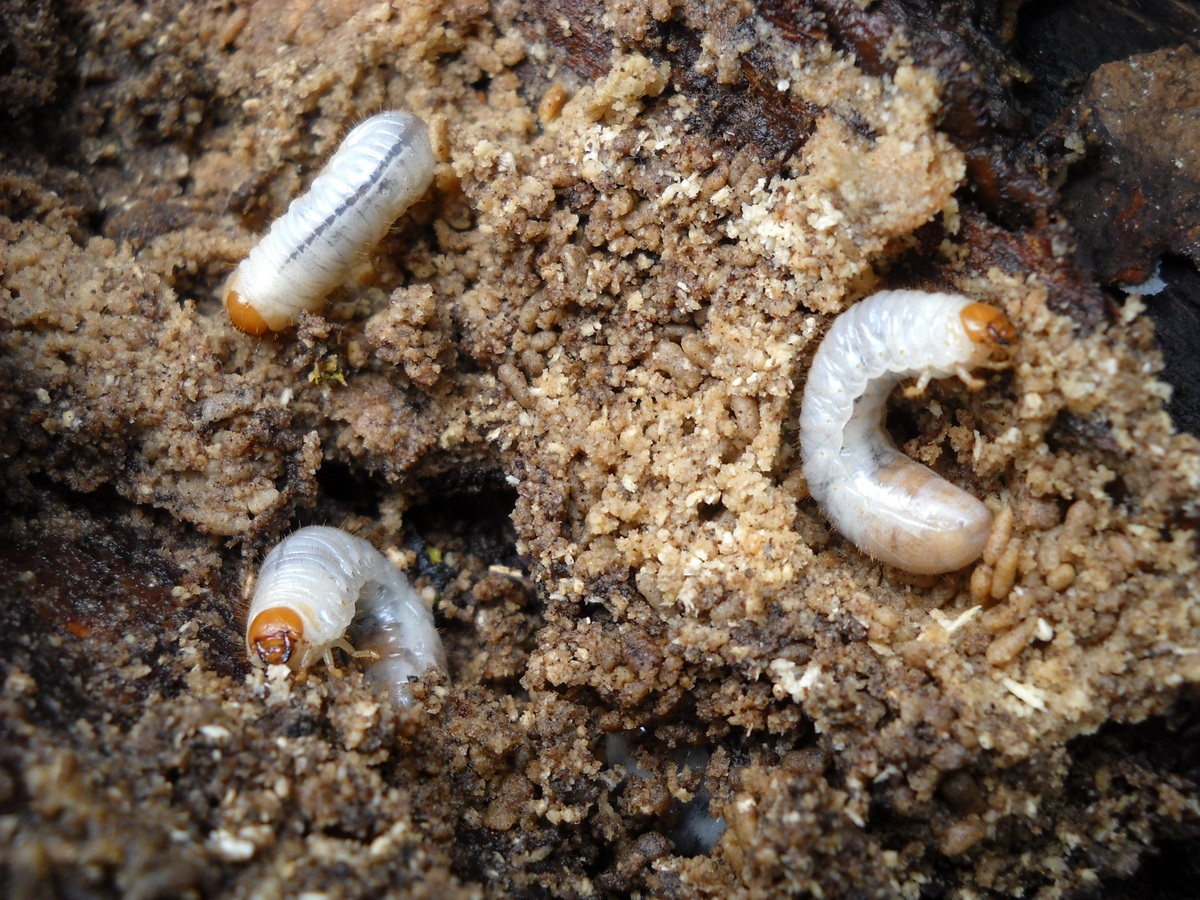Beetle grubs can benefit your compost. But if you'd rather not have them around, there are a few things you can do to get rid of them. Citrus fruit, dry leaves, and letting chickens roam through the compost pile eating them are all effective methods.
Beetle larvae, known as grubs, come in many shapes and sizes. Some are pale, white, or cream-colored with brown heads, while others may be brightly colored.
Most grubs are harmless, but there are a few species that can cause damage to your plants and compost.
Table of Contents
What Are Those Grubs in My Compost?
If you find grubs in your compost heap, don’t worry – they’re just beetles in their larval stage. Common white grubs found in garden soil and compost heaps include the larvae of the June beetle.
The figeater beetle is a large, green insect commonly found near fruit trees. The larvae of the figeater are white and C-shaped and can grow up to 2 inches long. They are nicknamed “crawly backs” because they tend to wiggle on their backs with their legs in the air.
The larvae of the black soldier fly are particularly good at breaking down nitrogen-rich organic matter, so it’s not unusual to find them near the top of your compost pile.
The young soldier fly larvae are gray-white and segmented, about an inch. They become dark brown as they mature, developing a torpedo-shaped, flattened, tough-looking body wrapped in spines and hairs. Adults are harmless and live only a few days, feeding on food scraps and laying eggs in compost.
Grubs can be beneficial for your compost, as long they are in moderation. An overabundance of grubs, however, can wreak havoc on your compost pile.
Is It Normal to Find Maggots in Compost?
Yes, it is. Larvae are attracted to warm, moist environments where they can feast on scraps.
If you want to keep your compost pile free of flies and their maggots, ensure a good layer of brown organic material (shredded paper, dry grass, and leaves) covering any nitrogen-rich food sources.
2 to 4 inches should do the trick in most cases.
Is It Good or Bad to Have Grubs in My Compost?
We often see grubs as gross and unwanted creatures. However, some would argue that larvae are valuable, especially in composting.
These little critters are great for decomposing food waste and are being farmed more and more as a beneficial insect for compost piles and gardens.
They can even be used as a protein source for animal feed or human consumption. Plus, there’s evidence that BSFs help curb fruit fly and housefly populations by feeding on their eggs.
Some people believe that grubs consume an excessive amount of the nutrients in the compost pile. These arguments are correct, but neither one is critical to achieving your gardening goals.
We gardeners often rely on helpful bacteria and insects to prepare our gardens for the next season. However, too many of them can lead to sludge that doesn’t offer much nutrition.
While some will die and provide benefits in terms of recycling value back to the soil conditioner, I think it’s not usually worth it in the end.
How Do I Get Rid of Larvae in My Compost Bin?
What steps can you take to eliminate grubs in your compost bin? Listed below are some suggestions that, taken singly or in combination, could be of assistance.
Method 1
- Use powdered builders lime. Add the lime to your compost bin and use a fork to turn the ingredients. That should kill the maggots present in the compost bin.
- You want to add brown matter like sugarcane mulch. That should help balance the compost bin water content.
- Leave the lid open for a couple of days and then repeat the process in case the larvae are not all dead.
Method 2
- If you find maggots in your compost, you can remove them using rubber gloves or a plastic spoon and scooping them off the top layer. Then place them in a vessel and discard the container in a remote location so wild birds can consume the contents.
- Add a layer of dried leaves, shredded paper, and grass to the compost. This layer should be 2-4 inches thick.
- If your compost bin has holes, patch them with pieces of window screen that are a quarter of an inch broader than the holes.
- Before installing the screen, seal the hole with a generous layer of waterproof caulking material.
- Use tape resistant to water to secure the screen’s borders to the wall of the container. That keeps flies from getting into the compost, reducing the likelihood of future maggot infestations.
How Do You Keep Grubs Out of Compost?
To deter animals from your compost pile, keep it turned frequently and maintain a good brown to green ratio. Avoid adding meat or meat by-products, as these will attract scavengers.
Do not add any kitchen scrapes with oil, seasonings, or cheese to your compost pile; these items will attract rodents. Also, avoid adding feces from non-vegetarian cats or pet litter to your compost.
An effective way to prevent animals from getting into your trash is to keep your bin far away from any potential food sources for them. That means keeping it away from pet food bowls, bird feeders, and fruit trees.

